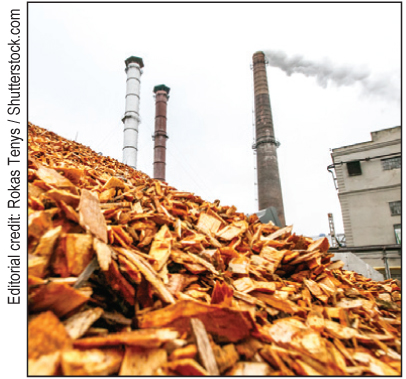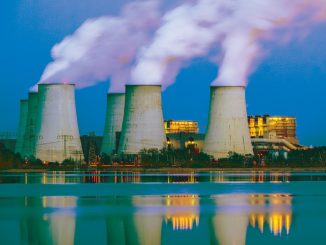
Delhi and other parts of north-western India made headlines for all the wrong reasons recently. Most of the region was enveloped by smog for several days, owing in large part to the burning of unutilised paddy straw remains by farmers in Punjab and Haryana. Among the several measures being taken to combat pollution in the northern states, the Ministry of Power (MoP) has notified the “Biomass Utilisation for Power Generation through Co-firing in Pulverised Coal fired Boilers” policy. Biomass co-firing at coal-based power plants is one of the most effective ways to manage the stubble. The policy suggests that all power plants/utilities with fluidised bed and pulverised coal units (except those having a ball and tube mill) should use 5-10 per cent blend of biomass pellets (made of agro residue) along with coal, after assessing the technical feasibility.
Further, the policy has entrusted the Central Electricity Authority (CEA) with the task of issuing specifications for biomass pellets and providing technical assistance to utilities for blending pellets with coal. The policy directs the concerned commission to determine the compensation for plants (other than those whose tariff has been determined under Section 62 of the Electricity Act) to be adjusted in the tariff for the increase in generation costs owing to the cost of pellets, increase in auxiliary consumption, effect on the heat rate of the plant, etc. Notably, this increase in tariff will not be taken into account for merit order despatch purposes.
Biomass co-firing is a well-proven technology and has been reognised as a carbon neutral technology for mitigating carbon emissions from coal-based plants by the United Nations Framework Convention on Climate Change. According to open source data, 230 plants across the globe (the majority located in the US and Europe) are undertaking biomass co-firing. Besides offering a viable alternative to stubble burning, the use of pellets creates additional income for farmers and employment opportunities.
Electricity generation from biomass
The estimated 30-40 million tonnes (mt) of unutilised paddy straw that is burnt in north-western India has the potential to operate 6,000-8,000 MW of capacity and generate 45,000 MUs of electricity annually. The blend of coal and pellets can be pulverised in power plants having bowl mills/vertical roller mills/beater mills. However, this method is not suitable for plants with ball and tube type of mills owing to the higher risk of fire.
The agro residue needs to be processed into dense biomass in the form of pellets. The densification of biomass in the form of pellets makes it easier to store, transport and use as a fuel. An acre of paddy crop generates around 2.4 tonnes of straw, which produces an equal quantity of pellets. Around 0.25-0.3 mt of biomass pellets are required for 7 per cent blending in a 1,000 MW coal-based plant.
Utility-level initiatives
NTPC Limited takes the lead in the co-firing of coal-based power plants with biomass pellets. The company has decided to use pellets at its plants in northern India and would purchase stubble from farmers at Rs 5,500 per tonne. NTPC operates seven coal-based plants in northern India and requires 21,000 tonnes of pellets daily to fuel one plant.
Earlier in 2016-17, NTPC had conducted a pilot project for co-firing of pellets at its Dadri thermal power plant (TPP) in Uttar Pradesh. It had successfully undertaken co-firing of 7 per cent blend of biomass pellets with coal at the plant. Apart from this, Larsen & Tourbo is setting up a paddy straw pellet-making unit at its 2×700 MW Rajpura TPP in Punjab.
Key concerns
One of the key issues facing the management of stubble through co-firing at coal-based plants is that the total quantity of paddy straw produced is significantly higher than the total capacity of plants in the northern states. As per industry estimates, Punjab alone produces around 20 mt of paddy stubble in a single season, while the TPPs in the state have a capacity to utilise around 700,000 tonnes. Besides, manufacturing units converting stubble into pellets are few in number and operate on a small scale. As the transportation cost of pellets is very high, the power plants utilising these must be located within a 15-20 km radius of pellet manufacturing units.
The way forward
In order to ensure the smooth implementation of biomass co-firing at TPPs, the National Green Tribunal has asked the Haryana, Rajasthan, Punjab and Himachal Pradesh governments to consider the possibility of setting up manufacturing units to convert stubble to pellets. Further, the tribunal has suggested setting up such units in two to three districts where crop burning is very high. Besides, the power ministry is in discussions with the state governments to make it mandatory for coal-based power plants to co-fire with biomass pellets.
In sum, co-firing of biomass at coal-based plants is likely to combat pollution created by stubble burning to some extent. However, for the successful implementation of co-firing, there is a need to build capacity for pellet generation. In addition, it is critical to encourage gencos to adopt co-firing.


